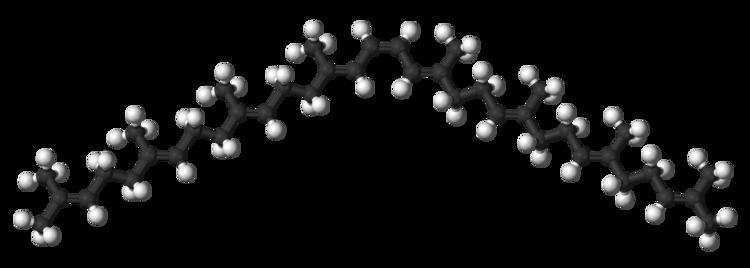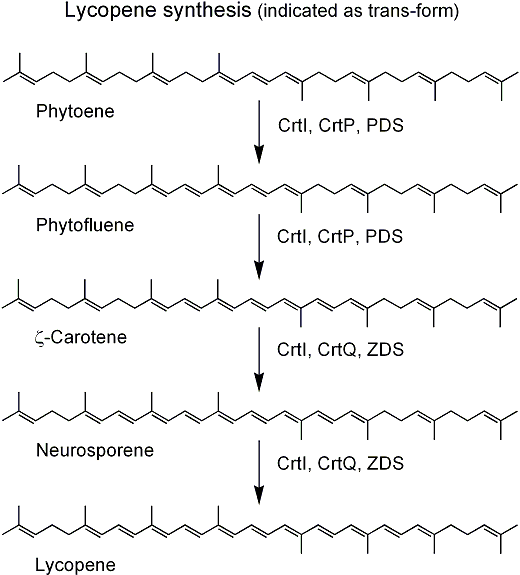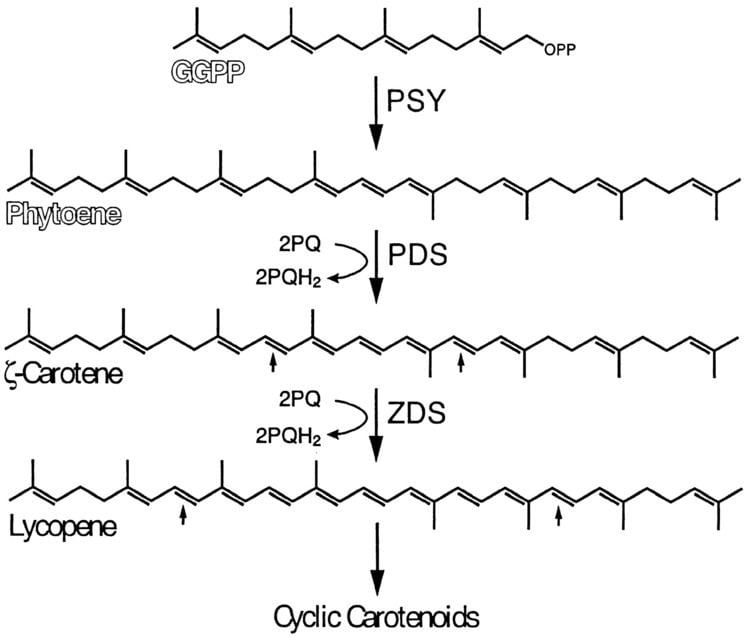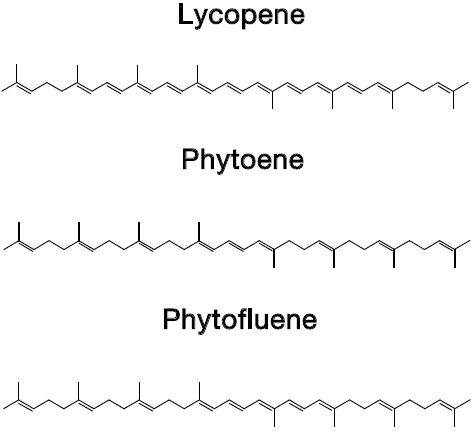Formula C40H64 Pubchem 9963391 | Molar mass 544.94 g/mol | |
 | ||
Phytoene meaning
Phytoene (FY-toe-een) is a 40-carbon intermediate in the biosynthesis of carotenoids. The synthesis of phytoene is the first committed step in the synthesis of carotenoids in plants. Phytoene is produced from two molecules of geranylgeranyl pyrophosphate (GGPP) by the action of the enzyme phytoene synthase. The two GGPP molecules are condensed together followed by removal of diphosphate and proton shift leading to the formation of phytoene.
Contents

Dietary phytoene and phytofluene are found in a number of human tissues including the liver, lung, breast, prostate, colon, and skin. Accumulation of these carotenoids in the skin may protect the skin by several mechanisms: acting as UV absorbers, as antioxidants, and as anti-inflammatory agents.
Structure

Phytoene is a symmetric molecule containing three conjugated double bonds. Phytoene has a UV-Vis absorption spectrum typical for a triply conjugated system with its main absorption maximum in the UVB range at 286 nm and with ε1% of 915.
History
The structure of phytoene was established and proven by total synthesis, by the Basil Weedon group in 1966.


